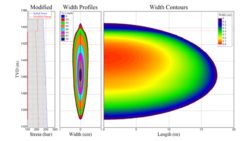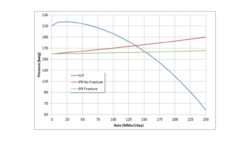AGR’s Reservoir Management team combines nodal analysis with thermal fracturing models to develop a perforation strategy for injecting CO2 into a saline aquifer.
Delivering the technical analysis crucial to CCS projects
Finding the right perforation method for injecting liquid CO2 into a saline aquifer was considered critical to avoiding the high risks present in a carbon capture and storage (CCS) project AGR worked on.
Key to the long term integrity of the site
AGR was engaged to play a key role in the field development plan and subsequent front end engineering and design phase for a major CCS project.
Our remit was to carry out the analysis and evaluation needed to provide a perforation strategy for the injection of liquid CO2 into a saline aquifer.
The project carried a number of risk factors. Because of the length of the offshore pipeline, the temperature of the CO2 would be (at worst case) seabed temperature in winter.
Injection of the cold (5 °C) liquid CO2 into a hot (57 °C) aquifer formation has the potential to result in thermal fracturing, which in turn can result in instability for the inflow. And if the fracture should extend vertically, the result would be loss of well integrity for long term storage of CO2.
The objectives for AGR were to provide recommendations for a perforation strategy that would:
- Ensure well integrity
- Ensure fracture growth remained within the reservoir
- Allow injection of the required volume of CO2
- Allow re-perforating or additional perforating to take place in future
The solution
A thorough analysis of all factors
Nodal analysis provided the potential injection volume for a non-fractured scenario. Sensitivity factors were run against the perforation interval for each of the six zones identified within the reservoir to ascertain the minimum length of perforated intervals required, assuming a matrix injection method.
A fracture model assessed the impact of the injection of the cold CO2 into the hot formation, including thermoelastic and poroelastic effects.
The results indicated that the predominant change in the effective stress was due to thermal influences, which resulted in fracturing of the near wellbore.
Perforation intervals were then defined, based on minimising the thermal fracturing and ensuring that injectivity could be achieved predominantly through the matrix. This maximised integrity and minimised flow instability.





